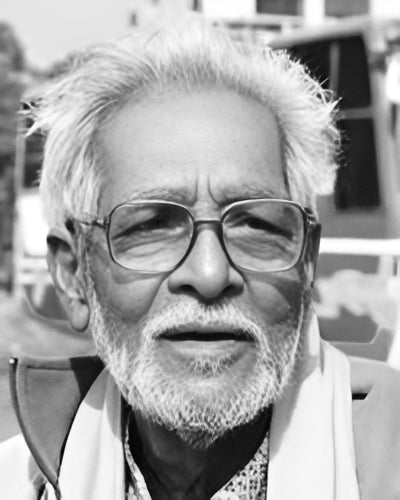
BIJON CHOUDHURY
Bijan Choudhury’s work reveals a fierce commitment to social justice and human dignity, articulated through a powerful visual language rooted in modernist experimentation and social realism. His paintings reflect a profound engagement with the realities of everyday life, capturing the struggles and resilience of marginalized communities with both empathy and critical insight. This dedication to socially conscious art permeates his creative vision, making his work both a mirror to society and a call for change.
Emerging from the vibrant artistic milieu of post-independence India, Choudhury was instrumental in challenging established norms and colonial legacies that dominated the art scene. His early expulsion from the Government College of Art and Craft in Calcutta, due to his Marxist beliefs, did not deter his resolve. Instead, it propelled him toward deeper engagement with progressive artistic circles, culminating in his studies at Dacca Art College. His activism and artistry were inseparable, guiding his involvement in founding key collectives such as the Society of Contemporary Artists and the Calcutta Painters. These groups played a critical role in redefining Indian art, shifting away from the Bengal School’s romanticism toward an art rooted in contemporary social realities and personal expression. Choudhury’s paintings combine formal innovation with urgent content, often addressing themes of injustice, inequality, and the human condition. His nuanced portrayal of these subjects invites viewers to confront uncomfortable truths while appreciating the aesthetic rigor of his compositions. The interplay of emotion and critique within his work creates a compelling dialogue that resonates beyond its immediate context.
In addition to his artistic production, Choudhury’s commitment extended into education. As the head of the Indian College of Art and Draftsmanship, he mentored emerging artists, nurturing a generation attuned to the responsibilities and possibilities of socially engaged art. His influence in this sphere helped sustain and expand the reach of progressive artistic ideals in India. Bijan Choudhury’s legacy endures through his courageous integration of activism and creativity, marking him as a vital figure in Indian modernism. His work continues to inspire reflection on the power of art to illuminate social realities and advocate for change, maintaining its relevance for both artists and audiences in the present day.



